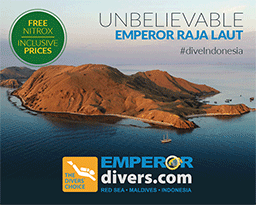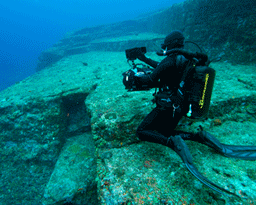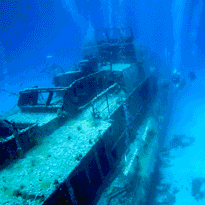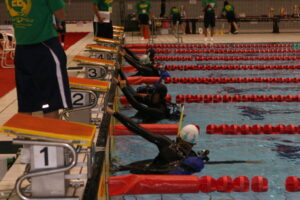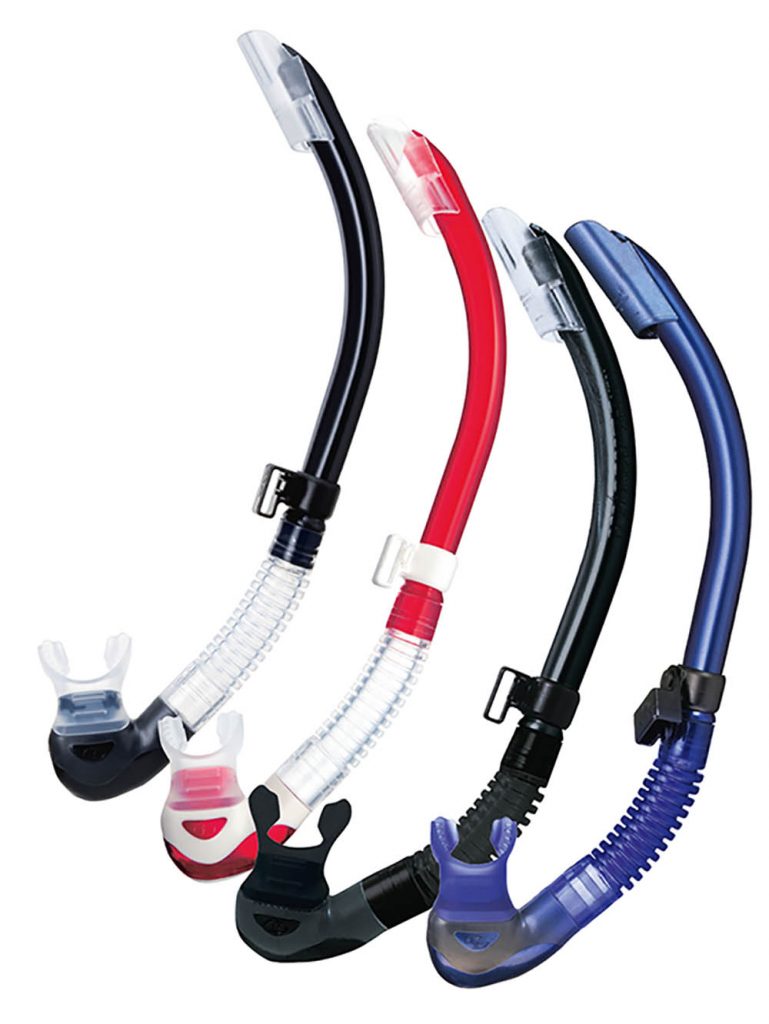
SNORKEL
TUSA SP-170 Platina II Hyperdry
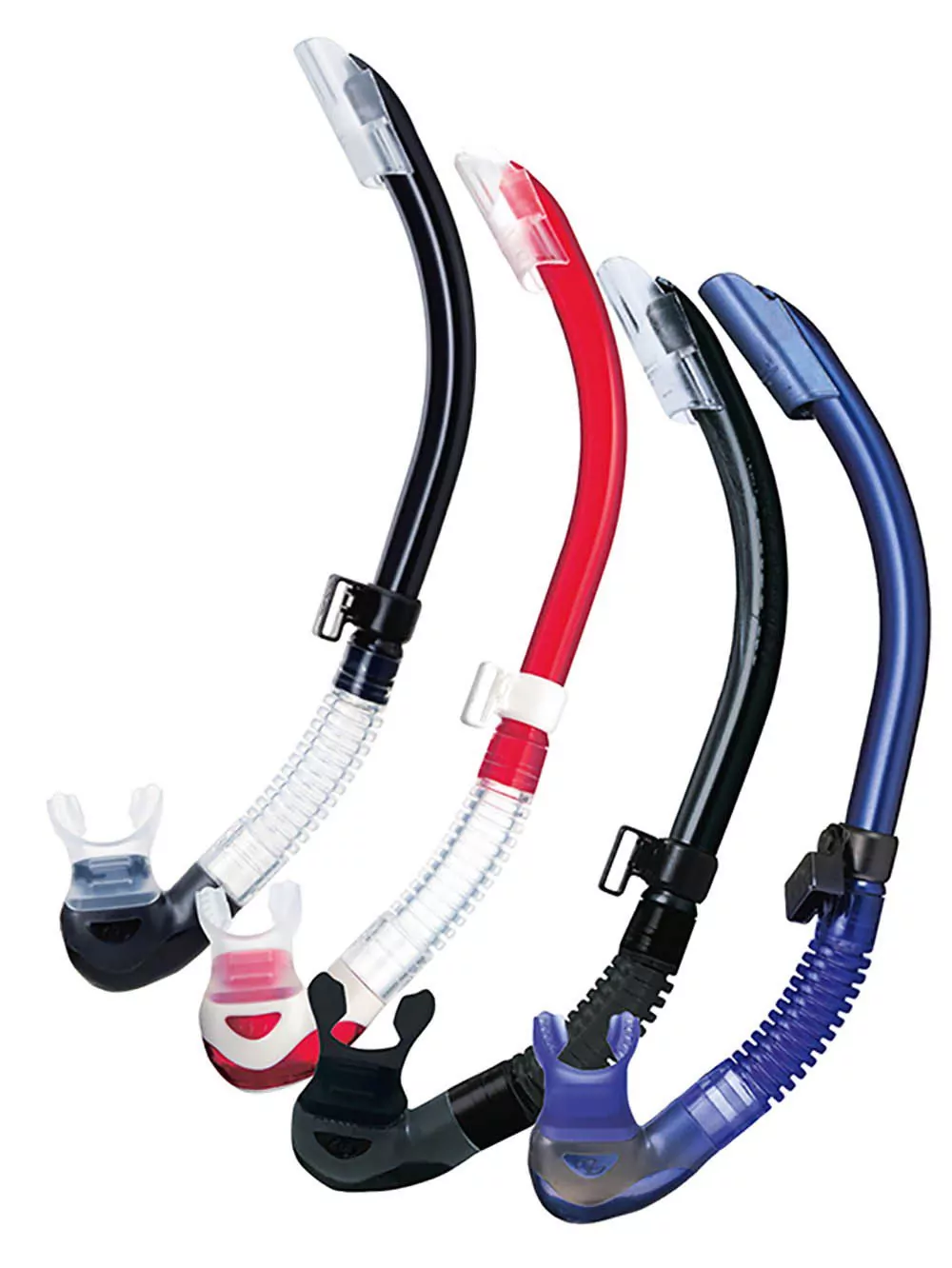
Appeared in DIVER February 2020
Sometimes, it’s just a bad dive day. I had fallen foul of the exception that proves the rule. I had miscalculated my air and surfaced safely, but 100m or so from the beach, with an empty tank.
For around a decade, I had planned for such a moment of utter stupidity by carrying a folding snorkel in my BC pocket. And, of course, it was now on shore in my dive-bag, because I was testing a wing that didn’t have a suitable pocket.
I blew the BC up by mouth, rolled onto my back and kicked for land. It was a drag.
Snorkels are an important safety-aid for scuba-diving, because, if out of air, they mean that you can still breathe easily, swim on your front and don’t have to fight to keep your head and mouth above water, especially in a chop.
The problem is how to carry it. While some agencies encourage divers to wear their snorkel on their mask-strap at all times, I never got on with this. Too often I’d stick my head into wreckage or a gap in some rocks and knock the snorkel, dislodge my mask and fill it with water.
Store a rigid snorkel under your knife-straps or stuffed beneath your harness webbing and it’ll likely fall out and be lost.
The snag-free, loss-free solution is a folding snorkel with, of course, a suitable pocket. Folding snorkels are most useful, in my experience, for an out-of-air situation.
The suppleness tends to make them flex if you use them for proper snorkelling, which makes them vibrate annoyingly as you swim.
I have a rigid snorkel I use for breath-hold diving. While a folding snorkel does work for finning to and from the dive-site to save air, it’s not as comfortable as a “real” snorkel.
So TUSA’s SP-170 Platina II Hyperdry snorkel quickly won me over. It’s a real snorkel that also happens to fold.
The Design
The tube is semi-rigid and bends to fit all but the smallest BC pocket.
But because it’s less squashable than other folding models, the Hyperdry behaves like a normal snorkel for freediving and won’t crush, restricting your breathing, if you thrust it under your mask-strap instead of using the quick-release connector.
It’s topped by a high-visibility anti-splash valve that diverts water droplets away from the inner barrel that leads to your mouth and back onto the outside of the tube instead.
The mouthpiece connects to the tube via a corrugated flexi-hose. The inside bore is smooth, so it won’t trap water.
Some divers favour this type of design, especially if they do wear their snorkel on their mask while diving. It allows the mouthpiece to drop clear of your jaw once released, and there it’s less likely to snag on your regulator.
The mouthpiece rotates to match the angle of your jaw. It’s very comfortable and can be replaced with a standard-fit regulator mouthpiece if you chew through the bite lugs or prefer a different type, such as one with mouldable bite-tabs. An efficient self-draining valve below the mouthpiece makes for very easy clearing and a nice, dry breathe.
Conclusion
You can get a deep, smooth inhalation easily through the TUSA. It’s not a snorkel for the freediving purist, but for the typical recreational diver it satisfies faultlessly the usually conflicted needs of an easy-breather for fun snorkelling and an easily stored safety snorkel. Highly recommended.
The post TUSA SP-170 Platina II Hyperdry appeared first on Divernet.
Read More Diver Tests, Gear, Other Dive Gear/Accessories Divernet





